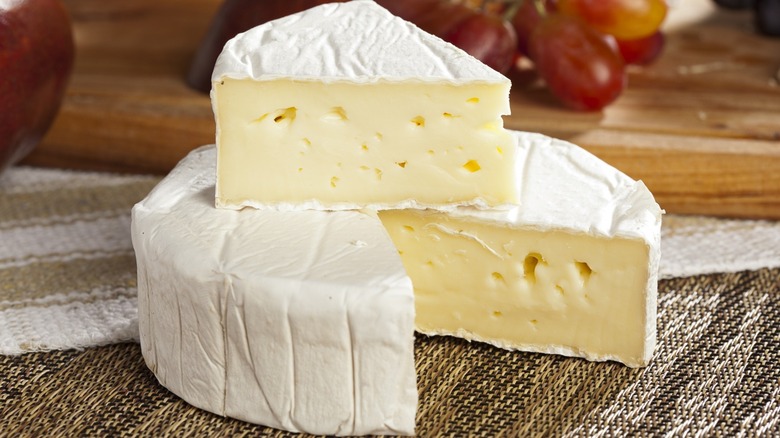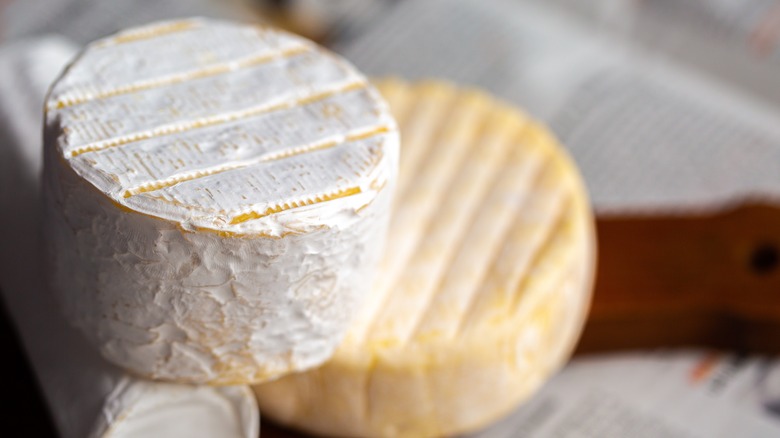The Biggest Differences Between French And American Brie
The iconic soft cheese Brie is named after its birthplace, the French region of Brie, and is known for its creaminess, meltability, mild, nutty flavor, and totally edible waxy, white rind. But did you know that genuine Brie made and served in France isn't quite the same as the stuff Americans have been feasting on? There are some differences between French and American Brie you should know before stocking up, especially if you are a turophile who is extra keen to detail.
One of the main distinctions between the two Bries is the source of the milk used to make them. The traditional French varieties – Brie de Meaux and Brie de Melun – are made from raw cow's milk, whereas American Brie is typically made from pasteurized milk. As a result, French Brie has a generally more complex palate with hints of earthiness and grassiness, whereas American Brie tends to be a bit milder in taste.
You can find another key difference between French and American Brie in their manufacturing processes. French Brie, for instance, is made using time-honored systems that have been passed down for centuries. The cheese is aged for anywhere between four and six weeks and is turned regularly to promote the even distribution of mold and bacteria. By contrast, American Brie is commonly produced using more modern, streamlined methods.
French and American Brie are made differently
The environments in which French and American Brie are produced also play a role in their quality. French Brie is often made in small, artisanal batches and aged in caves to achieve its beloved butteriness. This tried and true technique gives the cheese a unique flavor profile that is difficult to replicate elsewhere. While it is certainly possible to find cave-aged versions in the States, American Brie is often mass-produced and may be lacking the nuances that make its French counterpart so special.
Wisconsin is home to a great deal of American Brie cheesemakers, as the milk consumed in the Badger State has been found to be quite similar to that of French cows, according to Dairy Farmers of Wisconsin. Sadly, it's extremely rare to find 100% authentic Brie in the U.S. due to strict food safety laws. The Food and Drug Administration requires imported cheeses to be pasteurized or – if they're made with raw milk – aged for a minimum of 60 days, which simply won't cut it.
While the French and U.S. versions of Brie have contrasting characteristics, let's be clear: Both are delicious. But if you want a bite of the bona fide French creation, consider booking a plane ticket across the pond. Ultimately, the choice between the two may come down to personal preference, the specific recipe for which the cheese will be used, and where you are in the world when the craving hits.

